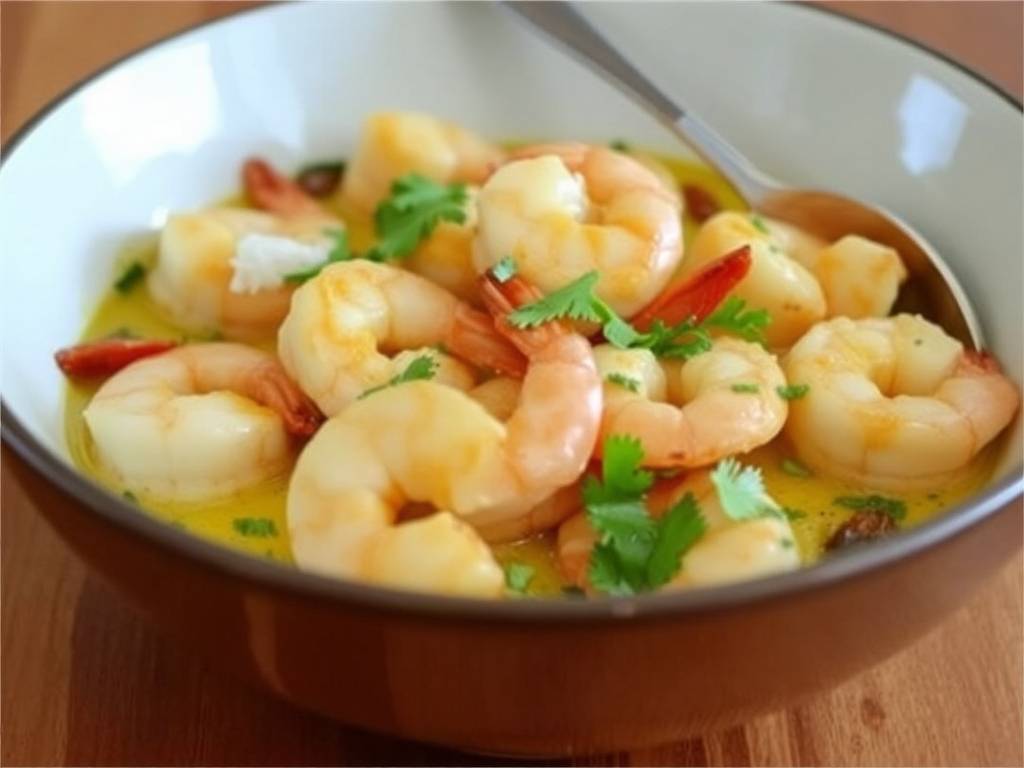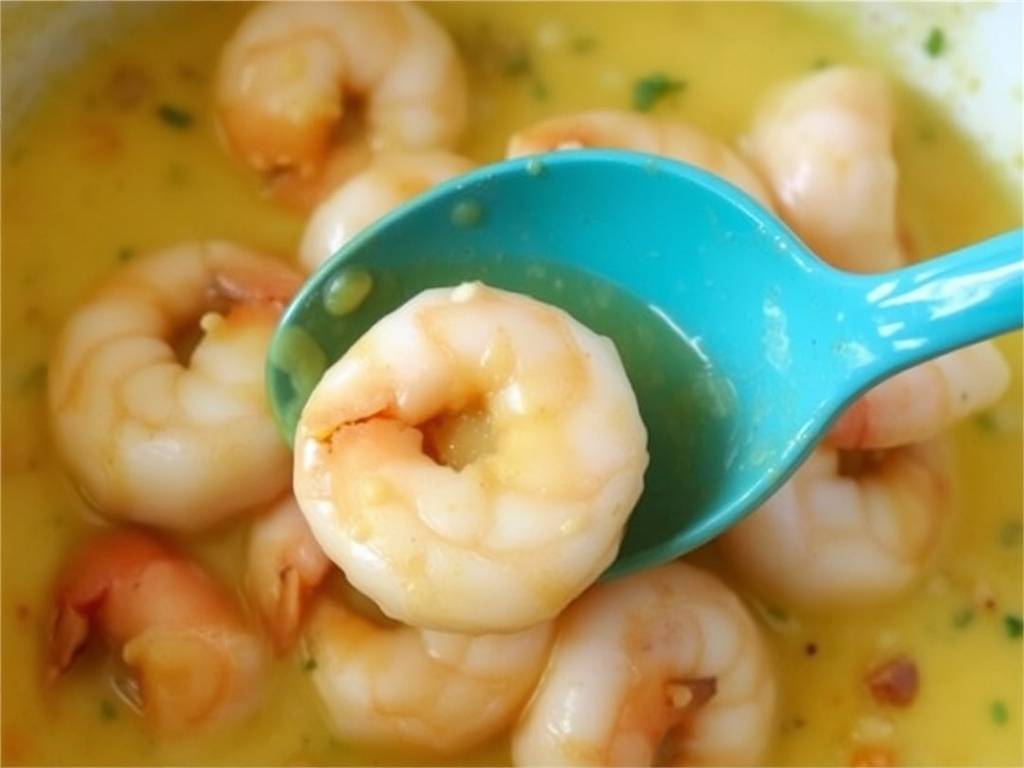Creamy Coconut Shrimp Curry: Your Ultimate Guide to a Flavorful Weeknight Dinner
There’s something incredibly comforting about a pot of shrimp curry simmering on the stove. The aromatic steam rising from the pan, carrying scents of ginger, garlic, and spices, mingled with the rich, creamy scent of coconut milk, is enough to make anyone’s mouth water. If you've ever wanted to recreate that restaurant-quality coconut milk shrimp curry at home but felt intimidated, worry no more. This comprehensive guide will walk you through every step, demystifying the process and empowering you to create a stunning, flavorful dish that will become a staple in your culinary repertoire.
This isn't just another recipe; it's a deep dive into creating the perfect coconut milk curry with shrimp. We'll cover everything from selecting the right ingredients to mastering the techniques that make this dish so special. Whether you're looking for a quick and easy shrimp curry recipe or want to understand the secrets behind a creamy and aromatic coconut curry, you've come to the right place. Let’s get started on your journey to making the best homemade shrimp curry you've ever tasted.

The Foundation: Gathering Your Ingredients
A great dish starts with great ingredients. Don't be tempted to cut corners here; the quality of your components directly impacts the final flavor of your easy coconut shrimp curry.
- The Shrimp: For the best results, use fresh, large, raw shrimp. Look for shrimp that are labeled "16/20" or "21/25," which indicates the number per pound. They offer a meaty bite that holds up beautifully in the curry. Remember to peel and devein them, but consider leaving the tails on for a more elegant presentation and extra flavor. Pat them dry with a paper towel before cooking to ensure they sear nicely instead of steaming.
- The Coconut Milk: This is the star of the show. For a luxuriously creamy coconut curry sauce, you need high-quality, full-fat canned coconut milk. Avoid the "light" versions for this recipe, as they are more watery and can make your curry thin. A good tip is to not shake the can before opening. Scoop out the thick, solid cream from the top to sauté your spice paste, and use the thinner liquid later to adjust the consistency.
- The Aromatics and Spices: This is where the magic happens. You'll need a classic base of finely chopped onion, fresh garlic, and fresh ginger. For the spices, both ground and fresh work wonderfully. The essential shrimp curry spice blend typically includes:
- Turmeric: For that golden-yellow hue and earthy flavor.
- Cumin: Adds a warm, nutty essence.
- Coriander: Provides a subtle, citrusy note.
- Red Chili Powder or Paprika: For heat and color. Adjust to your preference.
- Fresh Curry Leaves (Optional but Recommended): If you can find them, a sprig of curry leaves fried in the oil at the beginning will add an authentic, fragrant aroma that is unmistakable.
- The Flavor Enhancers: A tablespoon of tomato paste adds depth and a touch of acidity, balancing the richness of the coconut milk. Fresh lime juice, stirred in at the very end, brightens the entire dish. Finally, fresh cilantro for garnish adds a fresh, herbal finish.
The Step-by-Step Cooking Process: Building Layers of Flavor
Creating an incredible coconut milk curry with shrimp is about building flavors in stages. Rushing this process is the most common mistake. Follow these steps for a perfectly balanced dish.
-
Sear the Shrimp: Start by heating a tablespoon of oil in a large skillet or pot over medium-high heat. Season your shrimp with a pinch of salt and pepper. Sear them for just about 1-2 minutes per side until they are pink and opaque but not fully cooked through. They will finish cooking in the curry later. Remove them from the pan and set them aside. This initial sear locks in the shrimp's juices and adds a lovely caramelized flavor to the dish.
-
Sauté the Aromatics: In the same pan, add a bit more oil if needed. Add your chopped onion and cook until soft and translucent, about 5 minutes. Then, add the garlic and ginger, cooking for another minute until fragrant. This is also the time to add curry leaves if you're using them—let them sizzle for 30 seconds.
-
Bloom the Spices: Add your ground spices—turmeric, cumin, coriander, and chili powder—to the onion mixture. Stir constantly for about 30 seconds. This crucial step, known as "blooming," toasts the spices and releases their essential oils, transforming them from raw and dusty to deeply fragrant and complex. It’s the secret to a truly aromatic and flavorful shrimp curry.
-
Create the Creamy Base: Stir in the tomato paste and cook for another minute. Now, pour in the thick coconut cream from the top of your can. Let it simmer for 2-3 minutes, allowing the fat to separate and the flavors to meld. Then, add the remaining thinner coconut milk, stirring to combine everything into a smooth, creamy coconut curry sauce. Bring it to a gentle simmer.
-
Simmer and Combine: Let the sauce simmer uncovered for 5-10 minutes. This allows it to thicken slightly and the flavors to marry. Taste the sauce and adjust the seasoning with salt. Now, return the partially cooked shrimp to the pan, along with any accumulated juices. Let them simmer in the sauce for 2-3 more minutes, just until they are fully cooked and heated through.
-
The Final Touch: Turn off the heat. Stir in a generous squeeze of fresh lime juice and a handful of chopped cilantro. The lime juice is not just a garnish; its acidity cuts through the richness of the coconut milk and elevates all the other flavors.

Serving Suggestions and Customizations
Your beautiful homemade shrimp curry is ready! But how should you serve it?
- With Rice: The classic pairing is with steamed jasmine or basmati rice. The fluffy grains are perfect for soaking up the delicious sauce.
- With Bread: Warm naan bread or roti is another fantastic option for scooping up every last bit of curry.
- With Noodles: For a different twist, serve it over rice noodles or vermicelli.
This recipe is also highly adaptable. Here are some ideas for your quick and easy shrimp curry recipe variations:
- Add Vegetables: Feel free to add vegetables like bell peppers, spinach, or green beans. Sauté harder vegetables like peppers with the onions, and add leafy greens like spinach in the last minute of cooking.
- Adjust the Heat: Control the spice level by using more or less chili powder, or by adding a sliced fresh chili pepper when you sauté the aromatics.
- Make it a Thai-Style Curry: For a Thai-inspired coconut shrimp curry, use a store-bought Thai red or green curry paste instead of the individual ground spices. Sauté 2-3 tablespoons of the paste with the aromatics before adding the coconut milk.
Troubleshooting Common Issues
- Curry is too thin: Let it simmer for a few more minutes uncovered to reduce. Alternatively, you can mix a teaspoon of cornstarch with two tablespoons of cold water and stir it into the simmering curry to thicken it quickly.
- Curry is too thick: Simply thin it out with a splash of water, chicken broth, or the reserved thinner coconut milk.
- Shrimp are tough or rubbery: This means they have been overcooked. Be vigilant during the initial searing and the final simmering. Shrimp cook very quickly, and they are done as soon as they turn pink and opaque.
Cooking a delicious coconut milk curry with shrimp is an achievable goal for any home cook. It’s a dish that feels both indulgent and wholesome, perfect for a quiet weeknight or for impressing guests. By understanding the role of each ingredient and following the simple steps of building flavor, you can consistently create a restaurant-worthy meal right in your own kitchen. So, grab your ingredients, and get ready to enjoy the incredible, creamy, and aromatic results of your efforts. Happy cooking






发表评论